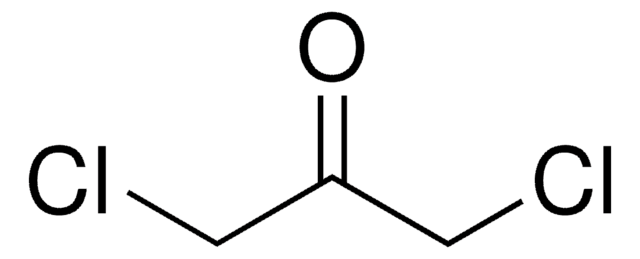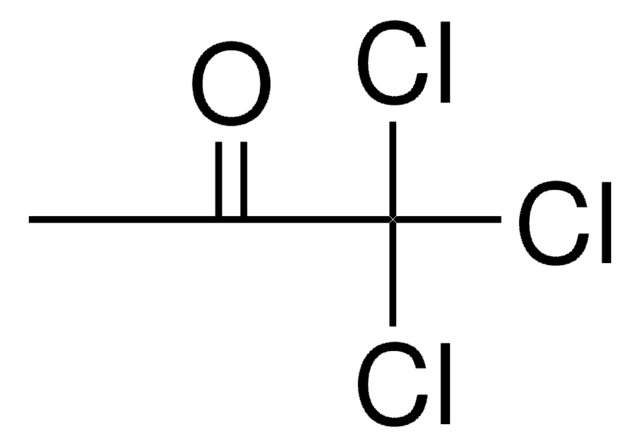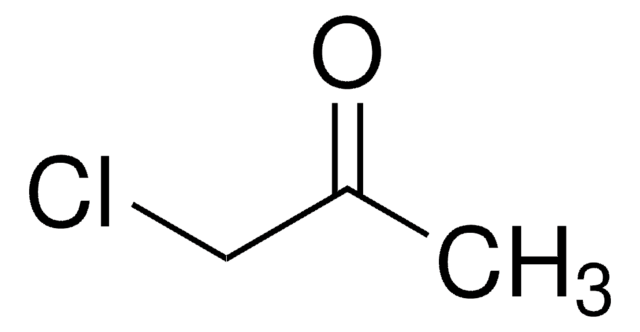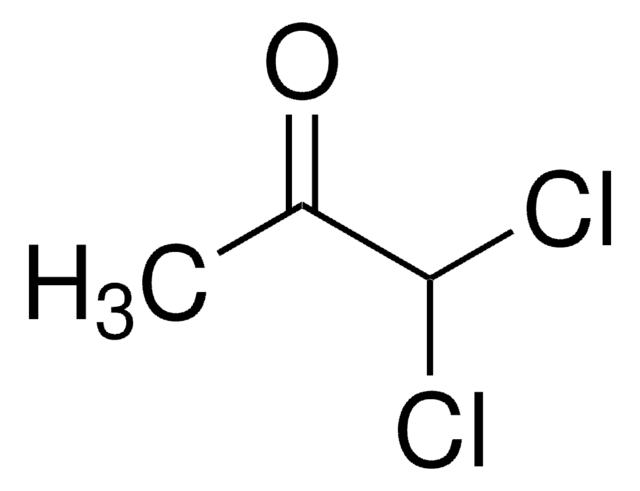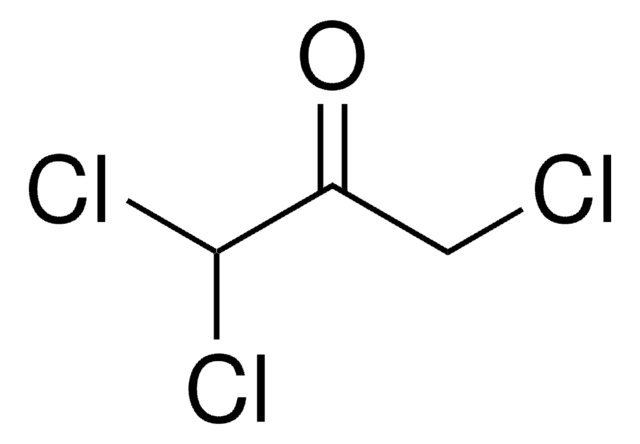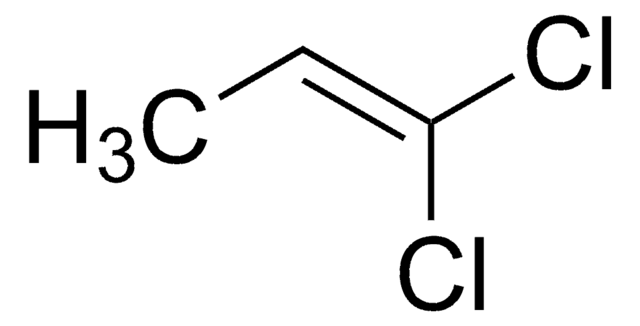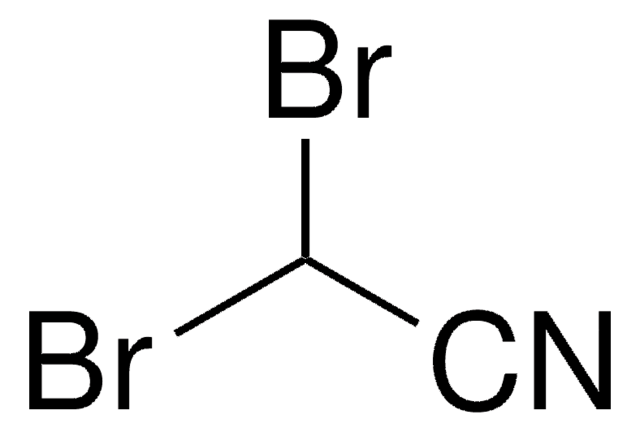推荐产品
等级
analytical standard
包装
ampule of 1000 mg
技术
HPLC: suitable
gas chromatography (GC): suitable
折射率
n20/D 1.446 (lit.)
沸点
117-118 °C (lit.)
密度
1.327 g/mL at 25 °C (lit.)
应用
environmental
包装形式
neat
储存温度
room temp
SMILES字符串
CC(=O)C(Cl)Cl
InChI
1S/C3H4Cl2O/c1-2(6)3(4)5/h3H,1H3
InChI key
CSVFWMMPUJDVKH-UHFFFAOYSA-N
正在寻找类似产品? 访问 产品对比指南
应用
Refer to the product′s Certificate of Analysis for more information on a suitable instrument technique. Contact Technical Service for further support.
警示用语:
Danger
危险声明
危险分类
Aquatic Acute 1 - Aquatic Chronic 1 - Eye Dam. 1 - Flam. Liq. 3 - Skin Corr. 1B
储存分类代码
3 - Flammable liquids
WGK
WGK 3
闪点(°F)
114.4 °F - closed cup
闪点(°C)
45.8 °C - closed cup
个人防护装备
Eyeshields, Faceshields, Gloves, type ABEK (EN14387) respirator filter
法规信息
危险化学品
Xu Xu et al.
Journal of exposure analysis and environmental epidemiology, 15(4), 289-296 (2004-08-19)
Dermal contact with some organic disinfection by-products (DBPs) such as trihalomethanes in chlorinated drinking water has been established to be an important exposure route. We evaluated dermal absorption of two haloketones (1,1-dichloropropanone and 1,1,1-trichloropropanone) and chloroform while bathing, by collecting
F B Daniel et al.
Drug and chemical toxicology, 16(3), 293-305 (1993-01-01)
Groups of 10 male and 10 female Sprague-Dawley rats were administered 1,1-dichloro-2-propanone in corn oil by gavage at 0, 10, 20, 40, or 80 mg/kg/day for 90 consecutive days. Food and water consumption, body and organ weights, organ-to-body weight ratios
Nan Huang et al.
Water research, 114, 246-253 (2017-03-04)
Benzalkonium chlorides (BACs), as typical cationic surfactants and biocides widely applied in household and industrial products, have been frequently detected as micropollutants in many aquatic environments. In this study, the combination of UV irradiation and chlorine (UV/chlorine), a newly interested
Yishuai Pan et al.
Chemosphere, 224, 228-236 (2019-03-02)
Metronidazole (MET) is a widely used antibiotic but is recalcitrant in aquatic environment. This study investigated elimination of MET by UV/chlorine process systematically. The degradation of MET in the process well fitted pseudo first-order kinetics. Decreasing pH from 9 to
Yu Li et al.
Chemosphere, 252, 126611-126611 (2020-05-24)
Halogenated disinfection byproducts (DBPs) are formed during chlorine disinfection of drinking water. The complicated natural organic matter in source water causes the formation of an even more complicated mixture of DBPs. To evaluate the toxicity of a DBP mixture in
我们的科学家团队拥有各种研究领域经验,包括生命科学、材料科学、化学合成、色谱、分析及许多其他领域.
联系技术服务部门